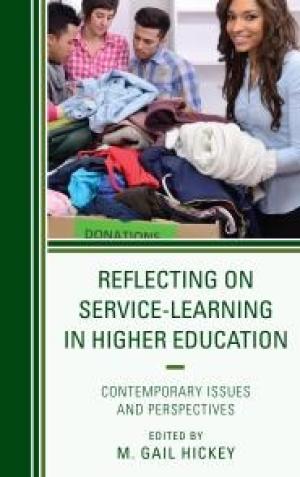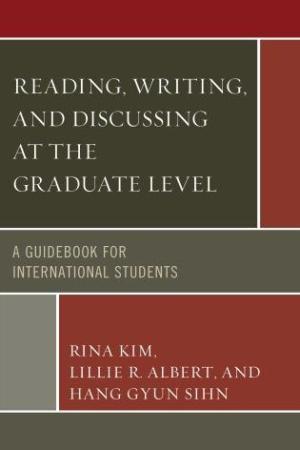Resources by Christina R. Zaker

“Spiritual Companioning for Ministry” is a course I recently taught for the first time for a colleague when she took a well-deserved sabbatical. She shared her syllabus and course plan with me and told me that she usually taught it to about 12 students which worked well for the topic. A couple of weeks ahead of the semester, I realized that I was going to have to make some major changes fast; close to 40 students had registered. The class involves a lot of sharing, often around intense topics, in order to become skilled in responding to the issues that surface when companioning others on their spiritual journey. I needed to design a way for so many students to have the ability to engage the texts as well as form a confidential and trusting learning community for the many discussions of this course. The key was to build effective small groups, which we called learning teams. Because Catholic Theological Union has students from around the world we used part of the first class to divide students into learning teams that allowed for diverse voices in each group. During that first class, we also discussed small group dynamics and the learning teams were invited to develop “ground rules” or covenants they wanted to keep with one another. (Examples of covenant points include confidentiality, cell phone use, planned facilitators etc.) The learning teams soon became the cornerstone of the class. They provided a rich framework for practical experience and integration of course material. Community within each learning team was fostered in a number of ways: The classroom was rearranged so that each learning team had a table to sit around. Tables were spaced so that intimate conversations could take place and other groups were not too close. This physical arrangement set the tone for the atmosphere I was hoping to foster in the class. Each session included discussions within learning teams. Discussion prompts might have been for groups of two or three or discussions for six, but students were always in discussions with someone from their learning team. This allowed for a mix in the types of discussion but kept discussions within the learning teams to build relationships throughout the semester. Each class began with a reading assessment where learning teams would discuss the readings and work through an assignment of questions or activities about the readings. This encouraged each student to stay on top of the readings, as their small group would expect their participation in these weekly conversations. Students completed “noticing journals” on our online D2L course management system. They were asked to post brief responses to prompts such as “Discuss a time this week you talked with someone about prayer” or “Discuss a time this week you noticed someone talking about or discerning a decision.” These posts would be read and responded to by learning team members online. One of the gifts of the online discussions was that students who were more hesitant to participate in the larger class setting had an easier time participating in the online forum. Throughout the semester, the worksheets on the readings, the noticing prompts, and in class discussions were more involved. Students engaged one another on progressively deeper levels. I spent less time engaging them in a large group but floated around the room checking in on their discussions, answering questions, and making notes for the next class’ lecture based on what I was noticing in the teams. During the semester, several students experienced serious illness or a death of a beloved family member. The learning teams provided an intimate hands-on forum for spiritually companioning one another in a way that the larger classroom could not have handled. On the last day, I brought in “talking pieces” that represented various discussions from the semester and invited students to “end well.” Learning teams were encouraged to select a talking piece and give each person in their group a challenge, a commendation, and a blessing. The learning teams took their time with this session; some continued well beyond the allotted class time. The sharing was deeply emotional and confirmed that learning teams within a large class provided the framework that modeled and built companionship in a profound way.

M. Gail Hickey has gathered together a valuable resource in Reflecting on Service-Learning in Higher Education. The chapters provide a vast collection of best practices and important principles to consider when engaging students in academic service-learning. The book is divided into three sections focusing on different perspectives for reflection: Community Partnerships, Classroom Practice, and Diversity. Although the first section is titled “Reflection on Community Partnerships,” it is really more a reflection on institutional commitment to building community partnerships. The section has two provocative chapters that take the reader through a reflection on just what impact an educational institution should have within its surrounding community and how service-learning can help the institution attend to the voices of the community in which it is placed. Sherrie Steiner’s principles for implementing reciprocity provide a great framework for institutions and faculty to consider while developing service-learning curriculums. Joe D. Nichols asks important questions about the focus on research and specialization at the expense of community and civic engagement and draws from multiple sources to foster reflection around alternatives to faculty recognition of such public work. “Reflecting on Classroom Practice” is the second and largest section of the book. Each chapter offers a perspective on how service-learning has worked in a particular context. This collection of cases from fields as varied as education, sociology, fine arts, and dental hygiene offers a myriad of suggestions for how to structure a curriculum that incorporates service-learning. There are suggested rubrics, logistical considerations, a solid bibliography with each chapter, and suggestions for what worked well and how one might improve the process over time. Readers will find this section full of ideas, suggestions, and methods focused on building a curriculum, partnering with community members, and methods for reflection with students. The final section, “Reflecting on Diversity,” pushes even further into the questions that come up when students engage in service-learning with diverse communities. Here the case studies offer insights into how students perceive and articulate the impact of their service-learning on their growing sense of their own contextual lenses and the lenses of those with whom they work. Faculty and administrators are invited to anticipate the types of responses their own students will have in an effort to foster positive reflection and growth in the students that is fruitful for the partner communities as well. One concern with the book is that community partners are not represented as writers of the chapters. The effort to shed light on the importance of effective community partnerships and the responsibility of higher education institutions to develop service-learning curriculum in partnership with the surrounding community is important. The inclusion of the voices of partner communities as authors could have added to the depth of the book. Reflecting on Service-Learning in Higher Education is a resource that will be appreciated by high school and university faculty and administrators. The questions raised and the suggestions shared will be useful for any institution looking to begin or strengthen their commitment to service-learning in higher education. Institutions, faculty, students, and the communities with which they partner will all benefit from M. Gail Hickey’s invitation to reflect.

Reading, Writing, and Discussing at the Graduate Level A Guidebook for International Students by Rina Kim, Lillie R. Ablert, and Hang Gyun Sihn is a new resource for graduate international students and those who work with them in the academic setting. The three authors come from diverse personal and academic backgrounds and draw from their experiences as international students themselves and from working with international students in developing this text. They provide a guidebook for students who are proficient in English but struggle to understand the “academic culture and norms in the United States” (ix). Each chapter focuses on a different aspect of graduate level work; academic reading, in-class discussions, writing assignments, preparing oral presentations, and developing relationships with classmates and professors. The authors do a good job of stating the limited scope of their effort. They recognize that the text is not going to provide a comprehensive primer on academic writing or research, but they point out common ways in which international students are derailed in their efforts because they misunderstand expectations. Throughout the text, the authors draw on informal conversations they have had with students to illustrate common perspectives or misunderstandings. The scenarios they highlight help to clarify issues and suggest ways of moving forward. These scenarios provide some of the most helpful insights in the book. International students may find chapter two on “Engaging in Academic Discussions” and chapter five on “Developing Social and Academic Relationships” to be the most helpful because they discuss at length ways to build confidence and helpful hints for anticipating the atmosphere of classroom interactions in the United States. The most effective aspects of each chapter are the ways in which the authors show how perspectives and expectations differ even in basic items such as how reading lists are arranged in a syllabus or clarifying the expectation to write in your own words. The subtle nuances of the academic culture of the United States are dealt with in a relaxed manner, encouraging students to ask questions or seek help when necessary. The text does assume a high level of reading proficiency. This is stated clearly by the authors, but the writing might be too complex for the students who are seeking the type of assistance the book covers. Although the main audience is the international student, this book is probably more helpful for faculty members who are beginning to teach international students. The informal scenarios that are scattered throughout the book provide a helpful window into the mind of the international student. Faculty members or other mentors will find this text helpful as they shape assignments, engage international students in classroom discussions, and articulate expectations.